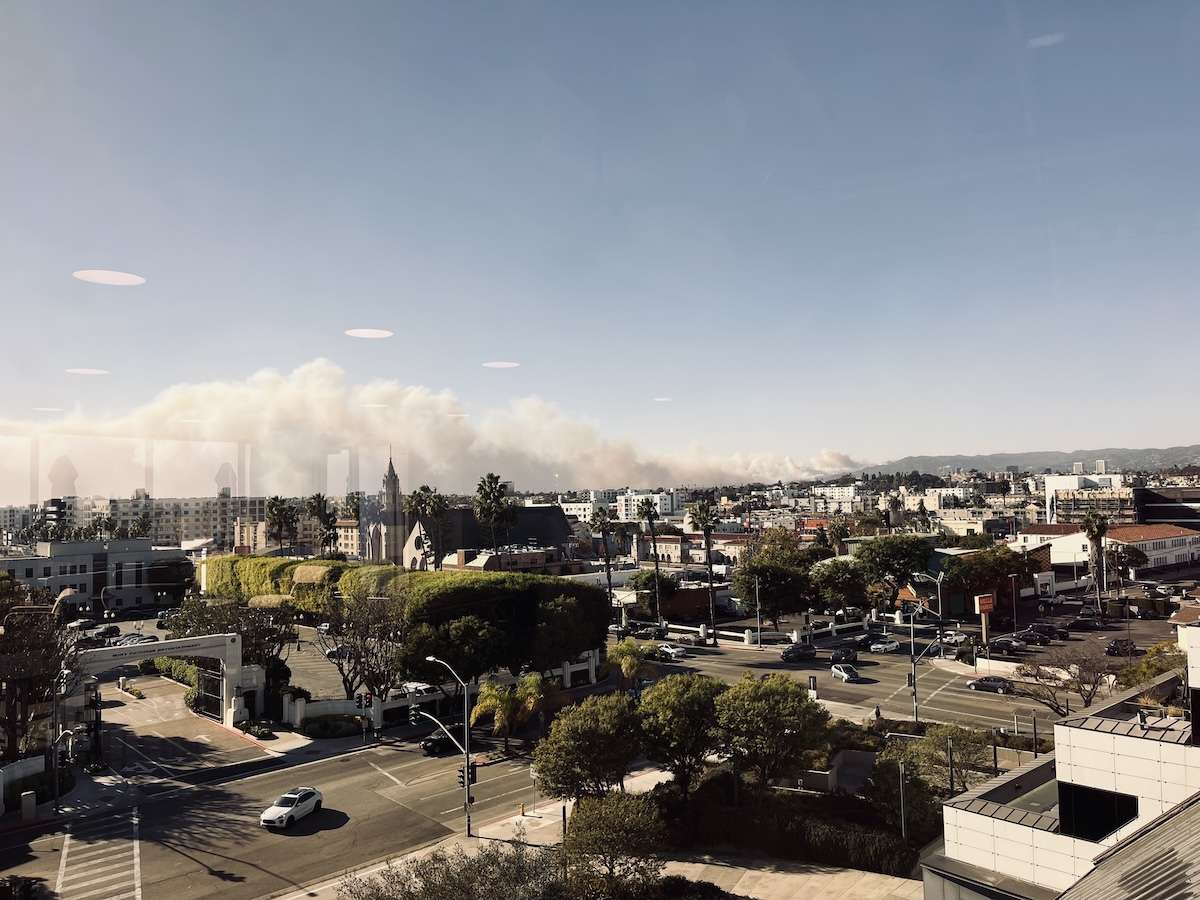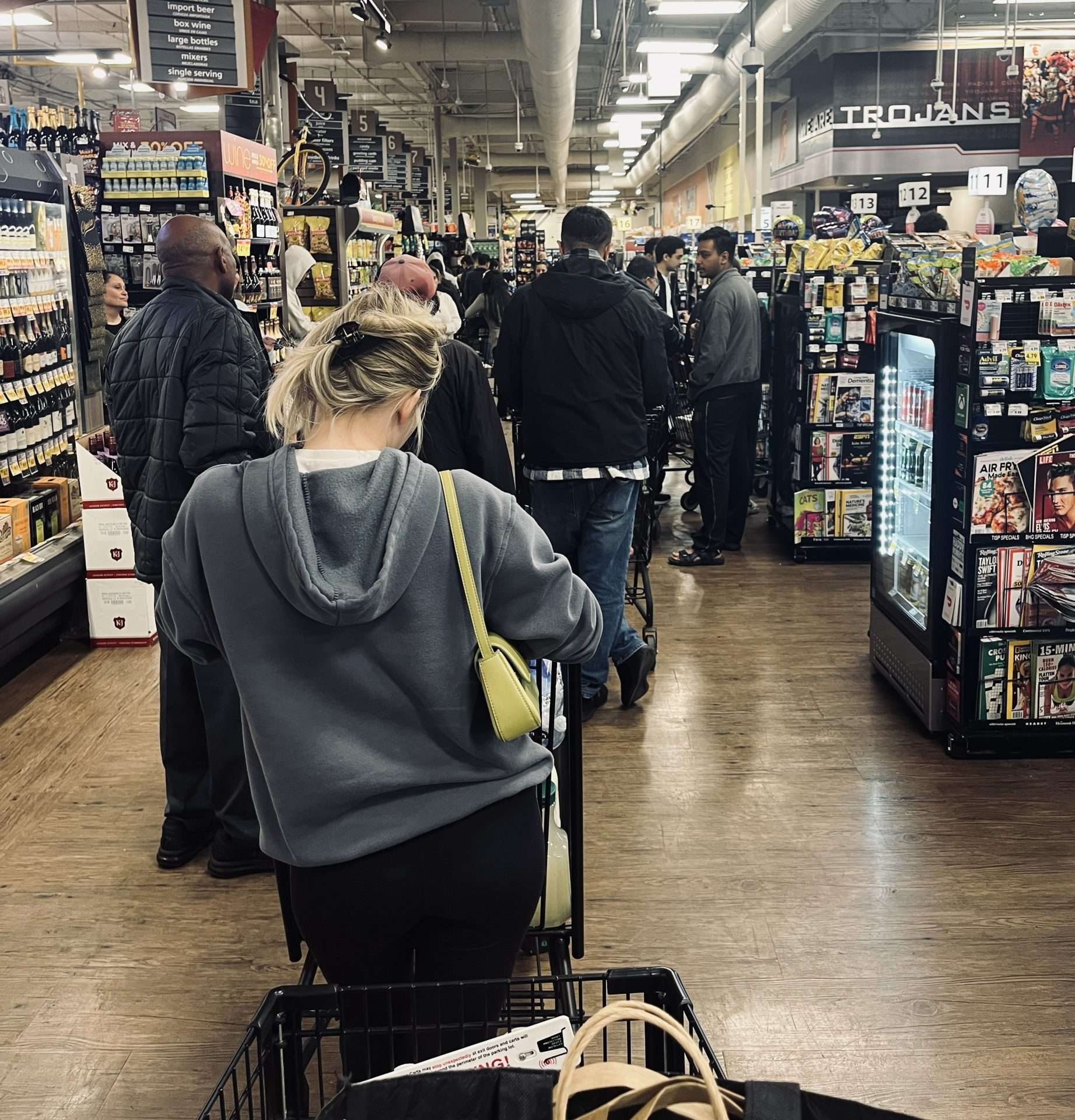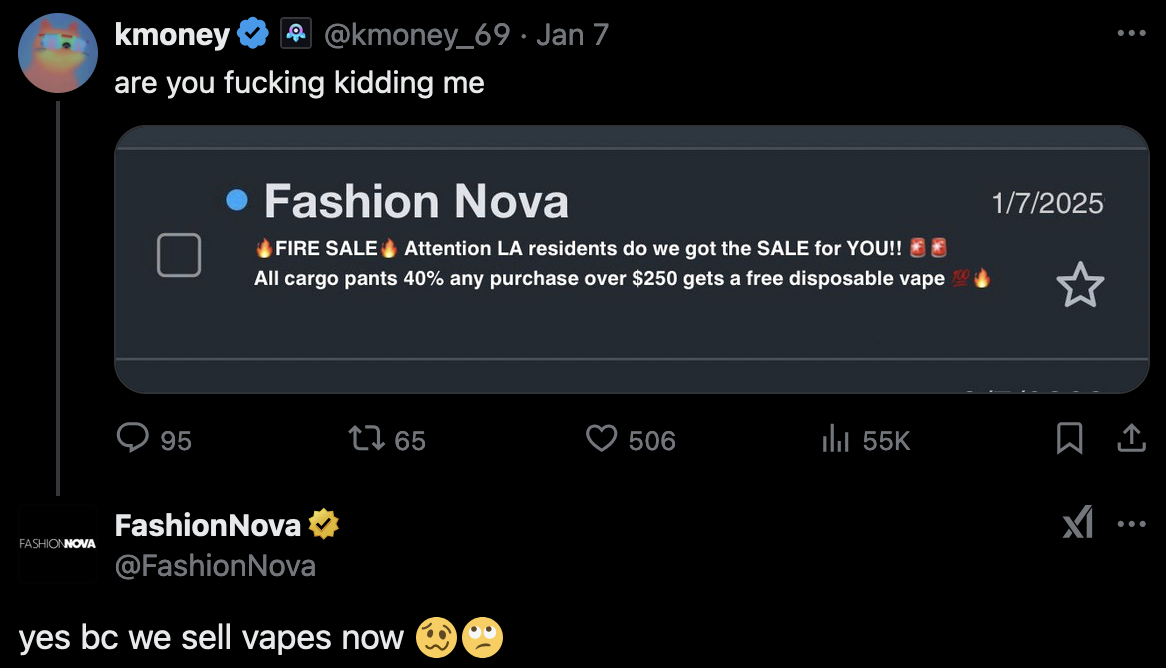We were barely made it 1 week into 2025 before all hell broke loose.
It’s the first full week back to work for a lot of us. On Monday, I just switched teams at my company and started a new role. On top of that I was excited to implement some of goals for the new year.
By Tuesday morning, I realized something was off. The outside of my house looked in disarray from the heavy winds. I went to work at my Culver City office, and saw smoke pouring out of the west facing window.

Sure enough, the Palisades Fire broke out and within days had consumeed over 20,000 acres. It’s heartbreaking—people’s absolute worst nightmare to lose their homes in a blaze.
Some tips if you want to help out:
- The MALAN Fire & Wind Google Sheet has the most comprehensive, updated list of aid types, volunteer and donation opportunities. This LAist article “The best way to help LA’s fire victims now” is also a good primer.
- Before you donate, ask if your company/work matches donations. (My workplace does this via Benevity).
- If you have spare clothes, I direct matching programs like the one from Seconds Market. Give clothes directly to who someone needs it versus traditional donations that require heavy sorting. Apply/give here.
_ _ _
Suddenly, my plans for the new year (including playing pickleball) went on the back burner.
It felt eerily similar to the early days of 2020.
5 years ago, everyone was also wearing masks and stocking up at the grocery stores.

Hard to tell from the pic, but I waited in this line at Ralphs for 30 minutes
Personally, the LA fire felt uncanny because I recently decided not to invest based on fire danger.
Mountain cabin dreams up in flames
In the last month, I’ve taken multiple Airbnb trips to the mountain towns in Idyllwild, Lake Arrowhead, and Crestline.
Staying at beautiful cabins, I had to check on Zillow how much homes cost in the area. Instead of the $800K-$1M for single family home in Los Angeles city, decent properties in the mountains can be had for in the $400K-$500K range.
An affordable, nice home in the mountains, that you can live in or AirBnB? What’s the catch?

There was something about this Reddit post that stopped me in my tracks:
u/Subterranean44u: “Are you willing to LOSE everything you have in a fire? If yes, then go for it.”
u/Mr_Figgins: I’m in Redwood Valley and lost everything in the 2017 fire. Honestly, the loss of personal items took a massive toll on my past and future. I’ve rebuilt and stayed but the fear and trauma will never go away. I have a hard time sleeping at night when I see street lights flicker in my window at midnight when I wake up randomly. The trade offs are there for what OP is seeking but living on pins and needles during “fire season” is not for the faint of heart.
Unfortunately, many people in Pacific Palisades, Altadena, and other fire-affected areas are facing this reality right now.
I scrolled down to the “Climate risk” of the listings in Idyllwild, and found that Fire Factor was an an extreme risk of 9 out of 10:

What stood out to me was not just the prospect of financial loss—which I’ll get to in the next section. What I got from the Redditors is that there’s an additional mental tax when you live and own in an area prone to natural disasters.
You’ll need to have constant vigilance—clearing brush, monitoring alerts, purifying air, always wondering if it’s your turn next.
I needed this reality check: Yes, the mountains are peaceful and cheaper—but am I ready for that mental tax? I think this tax is only worth it if I’m a “must live in the mountains” type.
The Financial Fallout from the Fires
The LA fire has already cost $20 billion in losses and may go as high as $150 billion.
By some estimates, this fire may cost more than $150B in total losses. We’re talking wealthy neighborhoods like Malibu, Pacific Palisades, and parts of Altadena where household net worths often range from $500K to $3M.
The silver lining is that many homeowners in these areas are affluent and have the means to get extra insurance, and are better positioned than the average population to rebuild. Anecdotally, I noticed that most people living in these areas had somewhere to go—friends, family, a second property. I can’t imagine the chaos that would’ve ensued if the fire engulfed low income neighborhoods with people who have no where to go. Still, that doesn’t erase the trauma or the ripple effects.
Here’s a long list of second order effects that I are coming…
Second order financial effects from the LA fire
LA is already one of the most expensive cities and this catastrophe means that prices will only go up.
- Housing supply shock: Fewer houses on the market means rents and property values could climb.
- Insurance premium spikes: Insurers recalculate risk after every major fire. We’ll likely see higher rates, fewer coverage options, or more exclusions around wildfires.
- Construction/rebuild costs: Materials and labor prices surge when thousands of people suddenly need to rebuild. New regulations for new buildings will also increase construction cost
- Tax implications: Possible new or higher taxes to fund disaster recovery, infrastructure repair, and future prevention efforts.
That’s not to mention the already devastating effects on air quality, health, and damage to the natural environment.
I suspect that this also makes Los Angeles (and many parts of California) unattractive for people to live in. I myself and wondering if LA is safe to stay in the long term if we keep getting fires every couple years.
People > Property
In a stroke of great luck, the fires have not damaged the homes of my closest friends and family. I’m crossing my fingers because the fires, as I type this, have yet to be contained.
I’m thankful evacuations have been relatively smooth, and casualty numbers remain low. As horrifying as it is to watch homes burn, human lives are the priority. A house can be rebuilt; people can’t be replaced.
Despite the grimness of all this, there’s a hopeful side too—communities rally, first responders jump in, neighbors help neighbors.
I tried looking up volunteer opportunities and they are all at max capacity—this is a good problem to have. Angelenos have heart.
I’ll repeat my favorite resources here:
- The MALAN Fire & Wind Google Sheet has the most comprehensive, updated list of aid types, volunteer and donation opportunities. This LAist article “The best way to help LA’s fire victims now” is also a good primer.
- Before you donate, ask if your company/work matches donations. (My workplace does this via Benevity).
- If you have spare clothes, I direct matching programs like the one from Seconds Market. Give clothes directly to who someone needs it versus traditional donations that require heavy sorting. Apply/give here.
If you’re in the L.A. area right now, stay safe, keep your loved ones close, and do a quick insurance audit. If you’re far away and watching from a distance, consider donating to relief efforts.
Until next time, remember: no matter how nice a home, it’s never worth more than your life.
Capitalism at its finest
- State Farm dropped fire coverage for 1,600 homes in the Palisades in July 2024. There will be a legal and financial battle over insurance payouts.
- Some places in Zillow increased rents to astronomical levels. These places are subject to Penal Code 396 which penalizes price gouging after an emergency
- Fashion Nova tweeted it was doing a “fire sale” on January 7th, the day the fire broke out. Maybe just an accident.

